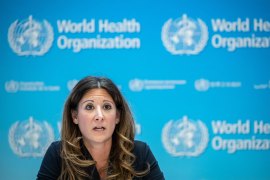Health Care Industry And Professionals Respond To Seniors’ Growing Health Needs
USA Today: "The explosive growth of the USA's older population is fueling a grass-roots 'village' movement in neighborhoods across the country to help people age in their own homes. More than 50 villages in a neighbor-helping-neighbor system have sprouted in the past decade from California and Colorado to Nebraska and Massachusetts. They are run largely by volunteers and funded by grants and membership fees to provide services from transportation and grocery delivery to home repairs and dog walking. Most villages have opened in the past couple of years, an indication that the momentum is growing in the face of a demographic tsunami: The number of Americans 65 and older is expected to more than double to 89 million by 2050, according to the Census Bureau" (El Nasser, 7/25).The Los Angeles Times: "If you're caring for a loved one with Alzheimer's, you're in plenty of company. Nearly 11 million people take care of the 5.3 million Americans with the disease, a number that's expected to grow to almost 16 million by 2050, according to the Alzheimer's Assn. The demands of care-taking often place enormous pressure on a family's time and resources. A 2009 AARP and National Alliance for Caregiving survey found that caregivers - most commonly middle-aged women caring for a parent - give more than 20 hours of their time per week. Most say it interferes with work, and the longer someone is a caregiver, the more likely her own health is to suffer" (Zamosky, 7/26).
Dallas Morning News reports on the "rapidly changing nature of geriatric care and new approaches doctors are taking to meet the bottom line. As the nation's 78 million baby boomers begin to flood the health care system, doctors focused on caring for the elderly find themselves in greater demand, shorter supply and searching for ways to balance costs with quality care. There are fewer than 8,000 trained geriatricians out of more than 900,000 physicians in the United States, according to the American Medical Association. In Texas, less than 1 percent of its 48,712 licensed medical doctors are geriatricians. Experts predict four times as many geriatricians will be needed by 2020 to serve the nation's aging population." New approaches include a team approach where social workers, nurses and geriatricians work together to better diagnose a senior and take into account their social and other needs (Repko, 7/25).
Arizona Daily Star: University of Arizona "faculty members from the Arizona Geriatric Education Center will train hundreds of health-care workers on how to better care for senior patients." Their focus will include a team approach for dealing with seniors' needs and improving health care workers' knowledge about specific issues for geriatric patients, such as delirium and falls" (Pallack, 7/26). This is part of the Morning Briefing, a summary of health policy coverage from major news organizations. Sign up for an email subscription.






